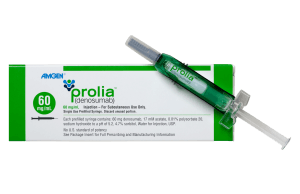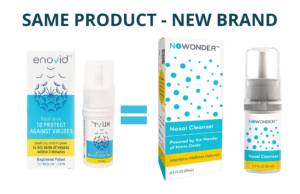
How can I get involved in World Cancer Day?
World Cancer Day 2025 is on February 4th. You can find a map of activities to get involved in an event for World Cancer Day, but people are encouraged to get involved any way they can, whether that is by donating money, volunteering their time, or simply spreading awareness and sharing their personal stories. This World Cancer Day, there is also the Upside Down Challenge. Take a video or photo of yourself and flip it upside down. Begin the caption with: “Cancer turned my world upside down…” and continue with your personal story. Share it on social media using #WorldCancerDay and #UnitedByUnique. Don’t forget to tag @worldcancerday.
What is person-centered care?
When my father was diagnosed with lung cancer, I was 19 years old. I remember the initial shock, the tears, and the “what ifs” before we entered into years of hospital visits, treatments, and surgeries. What stands out over this time between a “good” medical experience and a “bad” one always came down to the people and how they approached caring for my Dad and dealing with the hundreds of questions and concerns that my Mother inevitably had. This is why the theme for World Cancer Day over the next three years is so close to my heart. I’ve seen firsthand the difference a patient- or person-centered care approach can make. This approach helps not only with patient outcomes but also with patient and family morale and mental health, which is vital to maintain when facing a terminal diagnosis.
Directed care is an approach that could change how cancer and other illnesses are treated. It focuses on recognizing each person’s unique needs and ensuring everyone gets the care they deserve. A person-centered approach focuses on treating individuals with respect and recognizing them as unique people, not just their medical condition. It includes understanding what matters to the patient, as well as to their family, carers, and support network. This approach builds trust, encourages mutual respect, and involves working together to make decisions and plan care.
One of the most important aspects of directed care is getting all of the people who are close to the affected patient involved. This is especially relevant when the most suitable therapies will have perceptible effects in every aspect of their lives. For example, treatments for recurrent breast or prostate cancers can require the patient to take medication like Kisquali or Xtandi respectively. The unavoidable side effects of these are significant, including changes in appearance (hair loss due to alopecia), loss of strength and mobility, and others that affect the patient’s ability to interact with third parties. In such cases, it becomes necessary for family and friends to take up the burden of supporting the patient through the period while the prescribed medications are doing their job of holding-off the spread of the cancer.
The benefits of person-centered care
Person-centered care models offer many benefits. They help patients feel better during treatment, improve the quality of care, and build trust in healthcare providers. Patients and families will become more satisfied, and healthcare workers will feel more motivated. These models also reduce inequalities in who gets care and how it’s provided, making it easier for everyone to access the help they need when they need it. By focusing on prevention, treatment, and efficiency, they cut down on wasted resources and keep costs lower. Additionally, they strengthen health systems, making them more able to handle public health crises.
When a health system uses a compassionate and personal approach that values each person’s uniqueness, it changes how patients and providers interact. This connection fosters trust, understanding, and a closer relationship between everyone involved.
What are some examples of person-centered cancer care?
Making sure a care plan fits the patient’s unique situation
Care plans play an important role in patient care, providing a structured approach to managing health needs. Tools and templates are often available to streamline the process, but their use can vary. Many healthcare facilities rely on pre-made care plans tailored to specific illnesses. These plans can be helpful, especially when aligned with workplace guidelines. However, there’s always value in considering how the goals and treatments outlined in a care plan align with the individual needs of each patient.
Co-ordinating with other healthcare departments
Patient-centered care often involves collaboration among a patient’s healthcare team. When nurses work alongside doctors, social workers, and other specialists, they can contribute to care plans that reflect the patient’s unique needs and preferences. This teamwork can help address various aspects of the patient’s health, make better use of resources, and support smoother transitions between different types of care.
Cultural competence
Cultural competence plays a big role in providing patient-centered care. For example, when working with cancer patients, nurses might ask about any cultural or religious preferences related to treatments or end-of-life care. By listening and respecting their needs, nurses may be able to create a more supportive and personalized care experience.
Respect patient decisions and collaborate
Patient-centered care means putting the patient’s needs and choices first. By listening to patients and respecting their decisions, healthcare providers may be able to build stronger relationships with their patients, which helps improve their overall care and recovery. For example, when working with cancer patients, medical staff can ask about the patient’s preferences for treatment plans, such as choosing between different therapies or addressing concerns about side effects. This approach ensures the patient feels heard and involved in their care.
Foster a good practitioner-patient relationship
A strong connection between practitioners and patients plays an important role in patient-focused care. When healthcare workers build trust and demonstrate qualities like respect, empathy, and professionalism, patients often feel safer and more supported. This can create an environment where better health outcomes are possible, and patients may feel more inclined to follow their care plans.
Cancer isn’t just a medical condition or a statistic—it’s a deeply personal journey. Every diagnosis comes with a unique story of challenges, strength, recovery, love, and more. That’s why cancer care that focuses on each person’s individual needs, with kindness and understanding, leads to the best outcomes.
Unfortunately, my father lost his battle with cancer, and he passed in January 2007. However, the medical community who treated him, from his oncologist to the nurses who stopped by just to see if he was comfortable, made a lasting impression. Their kindness and compassion are what stood out to my family and me during a difficult time.
This experience has solidified my belief that person-centered and patient-centered care should be the standard in healthcare. It’s not just about treating an illness but also caring for the person behind it. This can make all the difference in a patient’s journey towards recovery or their comfort as they face a terminal diagnosis.
FAQs
What is the symbol of Cancer Day?
A lavender ribbon typically represents support for individuals affected by all forms of cancer. Sometimes, people wear ribbons featuring multiple colors or a rainbow design to convey the same message. World Cancer Day is held each February, with the 2025 World Cancer Day on February 4th.
Which test confirms cancer?
A biopsy is typically required to confirm a cancer diagnosis. In a lab setting, cell samples are examined under a microscope. Healthy cells appear uniform in size and organized in a structured pattern, while cancerous cells display irregular sizes and a disorganized arrangement.
How best to communicate in person-centered care?
Effective communication in patient-centered care involves asking open-ended questions to understand the patient’s concerns, allowing them to speak without interruption, and practicing focused, active listening throughout the interaction.

















